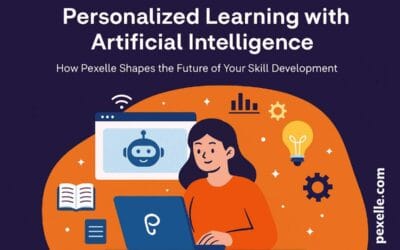The Rise of Cost-Effective AI Models in 2025: A Look Into the Future

In recent years, the field of Artificial Intelligence (AI) has witnessed tremendous growth, with models becoming increasingly sophisticated and powerful. However, one common challenge has been the high costs associated with training and deploying these AI models, particularly for smaller businesses and individual users. As we look toward 2025, several trends and innovations are emerging that promise to make AI more affordable and accessible to a wider audience. Here, we explore the top 10 most cost-effective AI models that are likely to dominate the market in 2025.
1. OpenAI’s GPT-4o Mini
OpenAI’s GPT-4o Mini, launched in mid-2024, marks a major step forward in making large language models more affordable. With prices significantly lower than its larger counterparts, GPT-4o Mini offers powerful performance at a fraction of the cost. At just $0.15 per million input tokens and $0.60 per million output tokens, it is over 60% cheaper than GPT-3.5 Turbo. This reduction in cost makes it a viable option for businesses and individuals looking for a robust yet budget-friendly solution for tasks like content generation and conversational AI.
2. Anthropic’s Claude 3 Haiku
Anthropic has emerged as a key player in the AI space, and its Claude 3 Haiku model is one of the fastest and most cost-effective models available. Released in early 2024, Claude 3 Haiku processes an impressive 21,000 tokens per second, making it ideal for real-time applications. Priced at just $0.25 per million input tokens and $1.25 per million output tokens, this model offers a great balance of speed, accuracy, and affordability, making it a strong contender in the competitive AI market.
3. DeepSeek-V3
DeepSeek-V3, developed by the Chinese AI company DeepSeek, is another exciting model expected to be a game-changer in 2025. With 671 billion parameters, DeepSeek-V3 is trained at a fraction of the cost of similar models, making it an attractive option for cost-conscious users. DeepSeek-V3 is capable of outperforming many leading models, including GPT-4o and Claude 3.5, while maintaining lower operational costs. This model is poised to become a go-to choice for businesses that need powerful AI without breaking the bank.
4. OpenAI’s o3-Mini
OpenAI continues to innovate with its smaller and more affordable models, and the release of the o3-Mini in late 2024 exemplifies this trend. A more compact version of the o3 reasoning model, the o3-Mini offers robust reasoning capabilities at a reduced cost. While pricing details are still pending, OpenAI’s history of offering budget-friendly models suggests that the o3-Mini will be a cost-effective solution for those seeking advanced AI features without the hefty price tag of larger models.
5. Google’s Gemini Flash
Google’s Gemini Flash is a lightweight and efficient version of their popular Gemini series, designed to offer high performance with minimal cost. This AI model is expected to be affordable for small and medium-sized businesses, with a pricing structure designed to lower entry barriers for AI adoption. Google’s continued commitment to making AI accessible will likely keep the Gemini Flash competitive in terms of both price and capabilities.
6. Apple’s On-Device AI Models
Apple has been making strides in integrating AI directly into its devices, reducing the need for heavy server-side processing. Apple’s on-device AI models, embedded within iPhones, iPads, and Macs, are expected to become even more powerful and cost-effective in 2025. These models not only offer excellent performance but also ensure that user data remains secure, as processing is done locally rather than in the cloud. Apple’s focus on privacy and seamless integration into its ecosystem makes these models a cost-effective option for consumers looking for an AI that works efficiently on their devices.
7. Meta’s LLaMA 3.0
Meta’s LLaMA (Large Language Model Meta AI) series has gained significant attention for providing powerful models at competitive prices. LLaMA 3.0, set to release in 2025, is expected to offer improvements in both performance and affordability. With its open-source nature, LLaMA models provide developers with the flexibility to train custom versions of the AI, making it a popular choice for those looking for cost-effective solutions in research and development.
8. Cohere’s Command R
Cohere’s Command R is another emerging model that prioritizes affordability. Designed to scale with minimal computational resources, Command R is an attractive option for businesses with limited budgets. The model is especially useful for applications such as language translation and summarization, offering competitive performance at a lower cost.
9. EleutherAI’s GPT-NeoX
EleutherAI is an open-source AI organization that has been producing cost-effective models for developers and researchers. GPT-NeoX, an iteration of its previous models, is expected to be one of the most affordable high-performance language models available in 2025. Its open-source nature allows for customization and flexibility, making it an ideal choice for users with specific requirements who do not want to pay premium prices for proprietary models.
10. Runway’s Gen-2
Runway’s Gen-2 model focuses on accessibility, particularly for creative industries. By optimizing costs while maintaining high-quality outputs for video editing, image generation, and other multimedia tasks, Gen-2 has become a favorite among content creators. It is expected that by 2025, Gen-2 will continue to lower costs while improving its versatility, making it an essential tool for cost-effective AI in creative workflows.
Conclusion
The future of AI in 2025 looks bright, with a growing number of affordable models making it possible for businesses, developers, and individuals to harness the power of AI without the hefty price tag. Whether you’re looking for a language model for content creation, a powerful tool for data analysis, or an on-device solution for privacy, these emerging models provide a wealth of options to meet diverse needs at competitive prices. As AI continues to evolve, we can expect to see even more cost-effective innovations that further democratize access to cutting-edge technology.
Source : Medium.com




